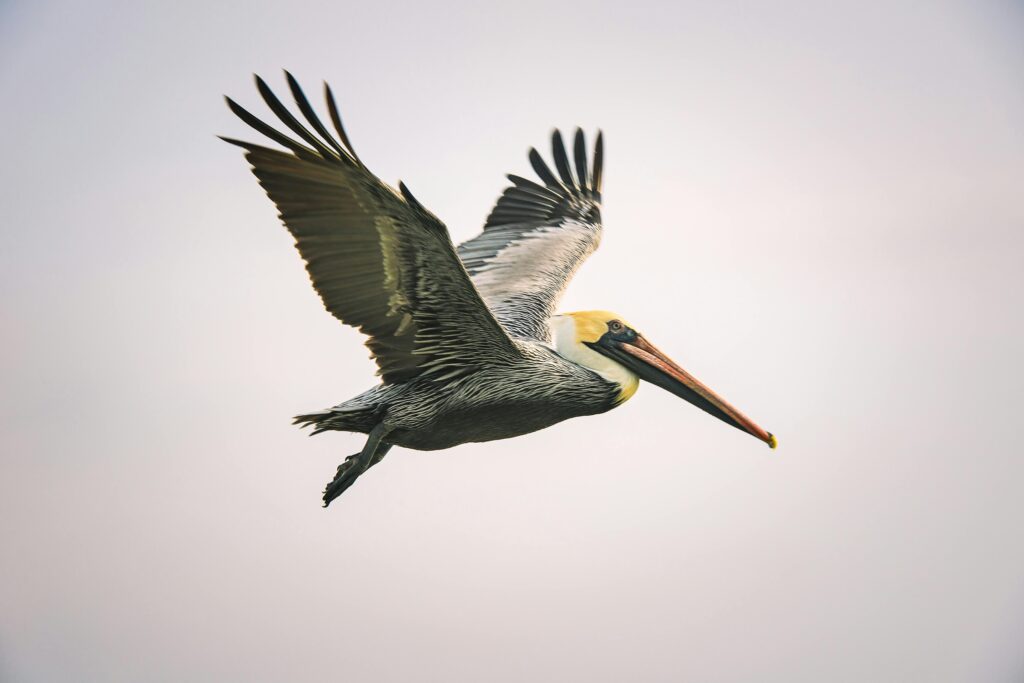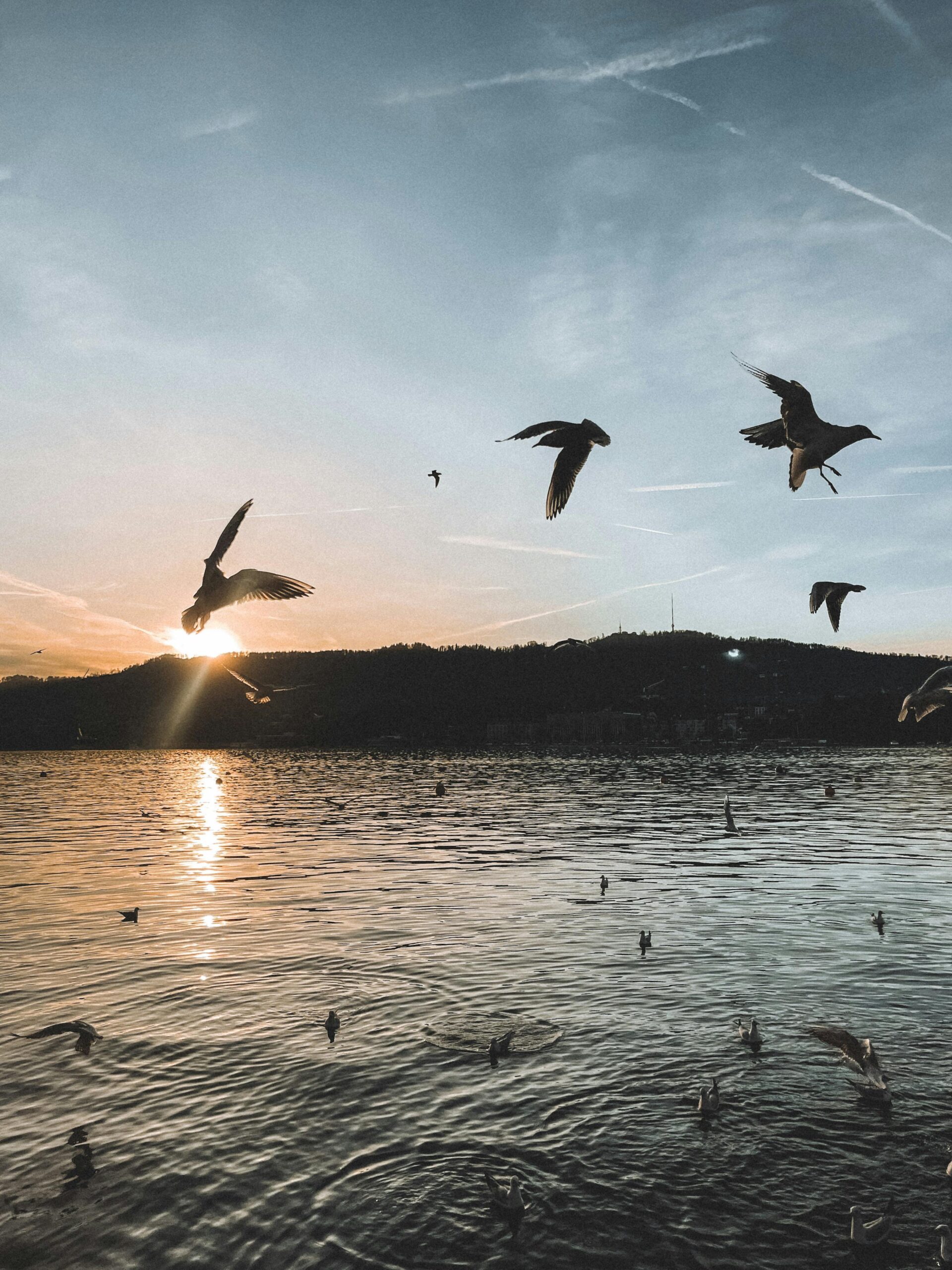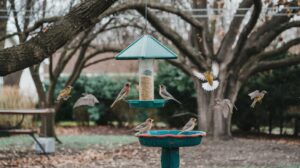As you gaze up at the skies, you may catch a glimpse of migrating birds soaring overhead. For centuries, their seasonal patterns have captivated us, inspiring awe and curiosity. What propels these feathered travelers to embark on epic journeys across oceans and continents? Their navigational abilities seem almost supernatural, guided by some unseen compass. In this article, you’ll join ornithologists and biologists as they study these migratory marvels. Through examining breeding habits, weather patterns, and tracking technology, you’ll begin unraveling the mysteries behind migration. You’ll discover the incredible abilities of birds to traverse thousands of miles to reach their destination. This journey will deepen your appreciation for the natural world and shed light on one of the most extraordinary phenomena in the animal kingdom.
The Incredible Journeys: An Overview of Bird Migration
Seasonal Movements
Birds migrate primarily to find adequate food sources as the seasons change. During spring and summer, most birds migrate north to take advantage of plentiful insects and plant life to feed themselves and their young. As winter approaches and food becomes scarce, the birds travel south again to warmer regions. These seasonal movements, between breeding and non-breeding areas, are the most common types of bird migration.
Impressive Distances
Some birds embark on incredibly long journeys, traversing continents and even hemispheres. The arctic tern holds the record for the longest migration, traveling nearly 44,000 miles annually between its breeding grounds in the Arctic and Antarctic. Other champion migrants include the bar-tailed godwit, which flies nonstop for over 6,000 miles, and the ruby-throated hummingbird, which crosses the Gulf of Mexico, a 500 mile journey, during its migration.
Navigation Wonders
The ability of birds to navigate such long distances and return to the same locations year after year is a biological marvel. Birds use a combination of senses and environmental cues to find their way, including:
-The sun and stars for orientation and direction. -The earth’s magnetic field to determine location and altitude. -Landscape features like rivers, mountains and coastlines as navigational aids. -An internal biological clock and compass that provides an innate sense of direction and timing. -Social cues from other migrating birds.
After a long journey, the familiar sight of their breeding or wintering grounds must be a welcome relief for these feathered globetrotters. The mysteries of bird migration showcase the wonders of nature and the incredible abilities of these aerial athletes.
Navigating the Skies: How Do Birds Know Where to Go?
Genetic Programming
Birds have an innate ability to migrate long distances with precision. This skill is genetically encoded in their DNA, passed down through generations. As days shorten in the fall, a bird’s circadian rhythm and changing hormone levels trigger an urge to move on to warmer areas where food sources will be more plentiful.
Celestial and Magnetic Compass
Birds can detect the earth’s magnetic fields to determine direction, relying on magnetite deposits in their beaks or senses that humans lack. The sun and stars also act as a compass, with birds orienting themselves based on the positions and movements of celestial bodies. Some birds may use polarized light patterns at sunrise and sunset. These natural compasses, combined with an internal clock, help birds navigate during long flights.
Mental Maps
Birds create mental representations of geographical features, landmarks, and the spatial relationships between them. They can recognize landscapes from different altitudes and perspectives. Some birds follow major flyways, while others navigate across featureless oceans. Certain birds may rely more on their mental maps during the first migration and then combine that knowledge with celestial and magnetic cues for subsequent trips.
Social Learning
Birds learn migration routes and behaviors from their parents and others in their flock or colony. By observing the speed, altitude, and timing of experienced birds, less experienced individuals can pick up survival strategies and the knowledge of where and when to fly. Social learning provides juveniles with information that would otherwise take years to acquire through trial-and-error. For some birds, migration is a collaborative social activity.
In summary, bird migration is a wonder of nature involving genetics, senses, cognitive abilities, and social behaviors that scientists still strive to fully understand. The navigational skills of birds never cease to amaze.

Flight Strategies: Soaring, Flapping, Gliding
Soaring
Soaring birds, such as eagles, hawks, and vultures, flap their wings to gain altitude and then spread their wings and glide over long distances while expending little energy. They locate thermal updrafts, columns of warm air rising from the land below, and use them to gain lift and ascend to great heights. From this vantage point, they scan the ground for prey or carrion. Once spotted, they descend in a slow, spiral glide. The key to soaring is finding and using external sources of lift to stay aloft and cover ground with minimal flapping.
Flap-Flapping
Flap-flapping birds, such as geese, ducks, and shorebirds, generate lift and thrust by constantly flapping their wings during migration. This requires a high energy output and limits the distances they can fly in one stint. However, flap-flapping allows for high maneuverability and the ability to take off and land almost vertically. Many smaller birds, like warblers and flycatchers, also utilize flap-flapping during migration. They make frequent stops to rest and refuel, but can still travel remarkably long distances over the course of a year.
Gliding
Some birds, like swans, cranes, and pelicans, employ a combination of flapping and gliding during migration. They flap their wings to gain altitude and speed, then glide for a distance before flapping again. Gliding allows them to conserve energy while still traveling at a brisk pace. These birds are often seen migrating in V-formation, taking advantage of the lift provided by the birds ahead of them. The lead bird, at the apex of the V, does the most work flapping while the others glide. They frequently rotate the lead position to share the effort required.
The specific flight strategy a bird uses during migration depends on its wing morphology, body size, and the distances it needs to travel between seasonal habitats. Efficient long-distance migrants have evolved the ability to soar and glide, maximizing lift while minimizing drag and energy expenditure. For shorter migrations, flap-flapping prevails as it provides greater control and maneuverability. The wonders of avian migration never cease to amaze.
Fueling Up for the Trip: How Birds Prepare Physically
To embark on their annual migratory journeys, birds must prepare themselves physically for the demanding trip ahead. Birds gradually build up fat reserves to provide energy during flight and fuel their metabolism. Some birds can double their body weight leading up to migration.
Storing Energy
Birds begin to eat more in the weeks preceding migration to gain weight and build fat stores. They consume foods high in carbohydrates and fats, such as nuts, seeds, and insects. The additional weight from fat accumulation does not hinder the birds’ flying ability and provides an efficient source of energy during long flights.
Molting and Feather Growth
Prior to migration, many birds molt and grow new feathers to prepare for changes in climate and habitat. New feather growth requires a lot of energy and nutrients, so birds molt during times when food is most abundant. With fresh, high-quality feathers, birds can fly more efficiently and stay properly insulated.
Orientation and Navigation Ability
Birds also prepare mentally and physically for navigation and orientation during migration. Some birds use cues such as the position of the sun and stars, the Earth’s magnetic field, and mental maps to determine their migratory route and destination. As the time for migration approaches, birds become restless and aggressive, signaling they are ready to begin their journey.
Timing Departure
The timing of a bird’s departure is crucial. They must leave early enough to reach their destination during optimal conditions but not so early that a lack of food at stopover sites or harsh weather along the route threatens their survival. The availability of resources, changes in weather, and other environmental cues all factor into a bird’s decision for the precise moment of departure.
To summarize, through a combination of biological changes, behaviors, and environmental factors, birds undergo a regular cycle of preparation for their annual migratory journeys. With adequate energy stores, proper feathering, honed navigation abilities, and ideal timing, birds of all species are primed to embark on their epic seasonal travels.
See the unseen: Explore the nocturnal world of wildlife with Ultra-X Night Vision Goggles. Shop Now!


Threats Along the Way: Challenges Birds Face During Migration
Birds encounter numerous threats during their long migratory journeys. As they traverse continents, oceans and mountain ranges, migrating birds must overcome challenges that threaten their survival.
Predation Risk
Migrating birds are vulnerable to predation from a variety of predators along their routes. Raptors, such as eagles and hawks, prey upon smaller migrating birds. Larger predatory birds may target juvenile, older or weaker birds in flocks. Terrestrial predators, such as foxes, coyotes and cats also pose risks for ground-dwelling migrating birds. For seabirds, seals, sharks and killer whales threaten migrating individuals. High predation rates during migration can significantly impact population numbers.
Habitat Loss and Degradation
As birds migrate, they require stopover sites to rest and refuel. However, many critical stopover habitats have been lost or degraded by human activity. Deforestation, wetland drainage, and urban development have destroyed essential stopover habitats. Birds are left with fewer places to safely stop, rest and feed during their journeys. For some species, loss of stopover sites is an even greater threat than loss of breeding or wintering habitats.
Collisions
Migrating birds face risks of colliding with man-made structures along their routes. Collisions with buildings, communication towers, wind turbines and power lines kill or injure hundreds of millions of birds annually. Night-migrating songbirds are particularly susceptible to collisions with brightly lit buildings and towers. Solutions such as bird-friendly building designs, proper tower lighting and strategic habitat management can help reduce risks of collisions for migrating birds.
Migrating birds have evolved extraordinary abilities to navigate across the globe, but they face immense challenges posed by an increasingly human-dominated landscape. Protecting birds during migration will require cooperative conservation efforts to manage predation, conserve critical habitats, and reduce hazards along their epic journeys. By working together, we can help ensure the survival of these migratory marvels.
Conclusion
Ultimately, the intricacies of bird migration leave us in awe. While research has uncovered pieces of the puzzle, mysteries remain on how our feathered friends traverse the globe with pinpoint accuracy. As you reflect on their navigational skills and drive to travel vast distances, remember that science is a process of discovery. Let the migration miracles motivate you to keep exploring with an open and inquisitive mind. There are still fascinating revelations ahead as researchers continue unraveling the secrets of our avian voyagers. Embrace the unknown, stay curious, and keep your eyes to the skies.





